Last Updated on December 5, 2025 by Emma Fajcz | Published: March 22, 2019
When you think of wine, Portugal doesn’t always spring to mind. But trust us, Portugal is a wine lover’s paradise. For a long time, this country flew under the radar of tourists, and so did its wine. By now, you’ve probably heard of Port wine, but what about Madeira wine, vinho verde, or Moscatel?
From light vinho verde to tawny port, Portugal offers a world of amazing sips.
The best part? You don’t have to spend a fortune to get a reasonable bottle of wine here (some can cost less than €5)! So, whether you’re browsing through the wine list at a restaurant or your local supermarket, we’ll guide you through everything you need to know about Portuguese wine.
How to order wine in Portugal
Get the wine list
Depending on where you go, the list of wines might be on the food menu. However, most restaurants will have a separate wine list. If they don’t give you one straight away, you can ask for it. In Portuguese, the wine list is Carta dos Vinhos.
Some tascas will also have a vinho da casa, a cheap house wine which can be a hit or miss. It’s always worth a shot!
Select your wine
Whether you’re in the mood for a red, a port, or a rosé, if you want to order like a local you need to know these words:
- White Wine – Vinho Branco
- Red Wine – Vinho Tinto
- Green Wine – Vinho Verde
- Rosé Wine – Vinho Rosé
- Port Wine – Vinho do Porto
- Madeira Wine – Vinho da Madeira
- Moscatel Wine – Vinho Moscatel or Moscatel
- Sparkling Wine – Espumante
Pick your region
Below you’ll find a brief overview of each região (region). If you’re still unsure what to go for, ask the waiter for a recommendation— O que recomenda? If it’s white wine he’ll probably ask you if you want doce (sweet), meio-seco (medium-dry) or seco (dry). For red, you can choose between leve (light), médio (medium), or encorpado (full-bodied).
Bottle or glass
In most places, there’s the option to choose between a garrafa (bottle) or a copo (glass). An average glass of wine in Lisbon costs around €3, and a bottle around €15. If you’re with a friend, we recommend ordering a bottle to share.
Enjoy and repeat
You’ve got the wine, now relax and enjoy it! If you like it, make a note of it, so you know what to get in the future. But why stick to just one when there are so many good wines to try? Soon, you’ll be an expert on Portuguese wine!
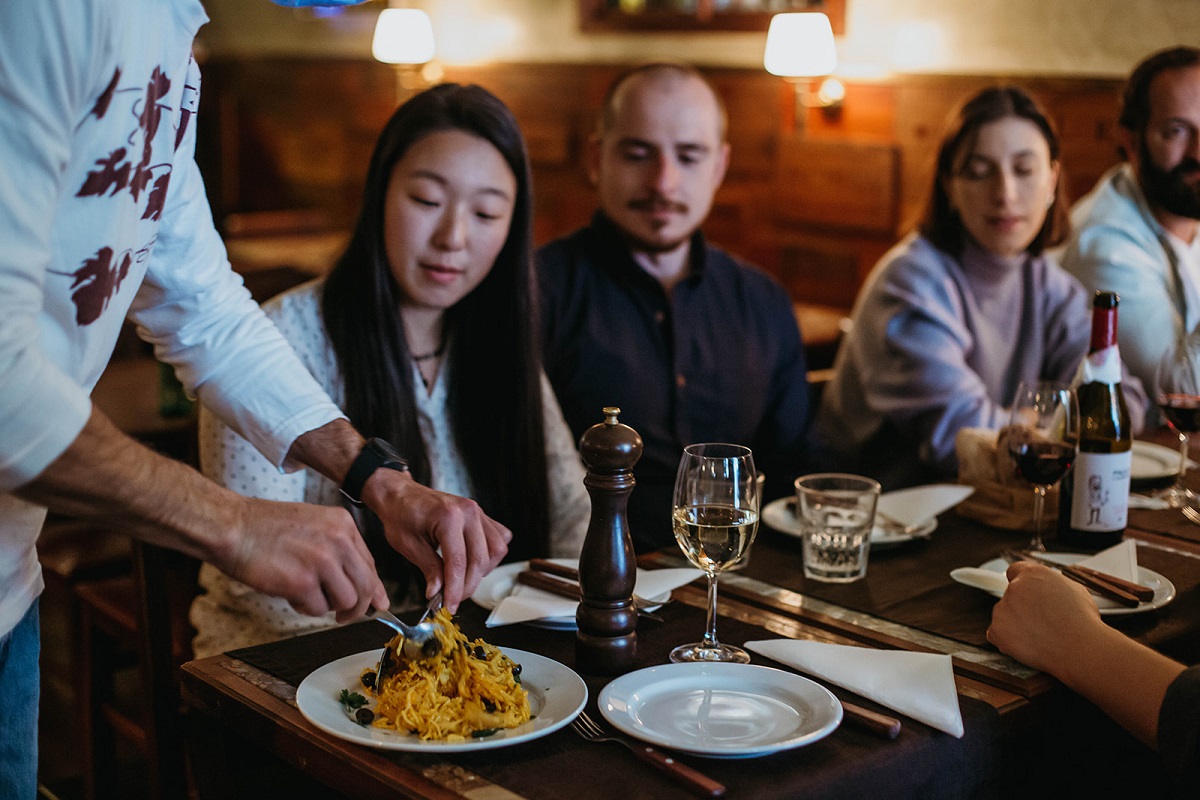
Other useful words:
- Ano de Colheita – year of harvest
- Adega – a wine cellar, usually underground, it can also refer to a winery.
- Cave – another word for wine cellar, mostly for aging wines like Port.
- Quinta or Herdade – wine estates
- Casta – grape variety
- DOC – wine made in specific areas with permitted grapes and a maximum limit for production, usually of higher quality.
- Vinho Regional – wine made in areas with less strict rules for the types of grapes and limits for production.
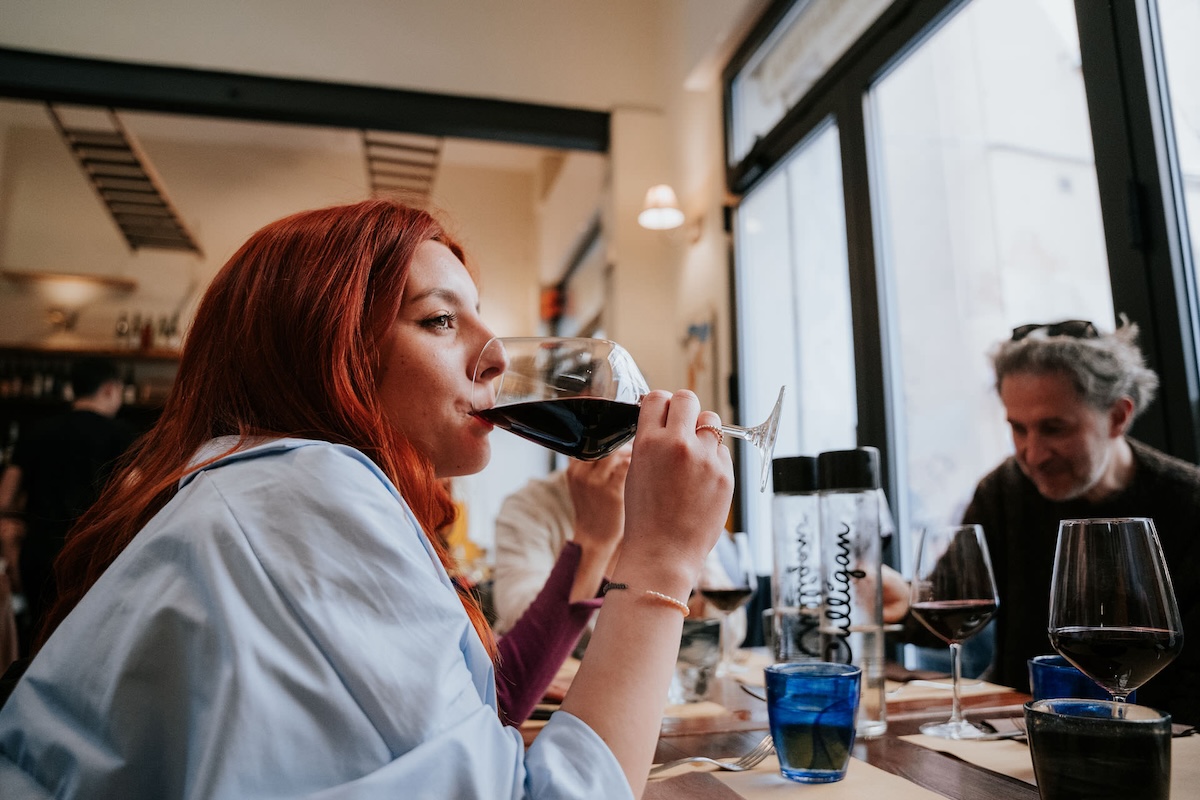
Portuguese Wine Regions
The first step to becoming an expert in Portuguese wine is to get familiar with the regions. Only then you can know the difference between a Douro, a Dão and an Alentejo wine. So, let’s give you a quick overview starting from the North to the South.
Vinho Verde
Stretching from Minho to the Douro, Vinho Verde is both a wine region and a type of wine. But what is Vinho Verde? While it translates to green wine, it means young wine. That’s because the bottles are released within 3-6 months after harvest and drunk almost immediately. Most Vinho Verde is actually white wine, but it can also be red – or even rosé. It’s the region that makes it a Vinho Verde. A glass of green wine is a summer staple for us Portuguese, and it’s the perfect match for a seafood meal.
Best Vinho Verde Wineries: Quinta da Aveleda, Quinta do Ameal and Palácio da Brejoeira.
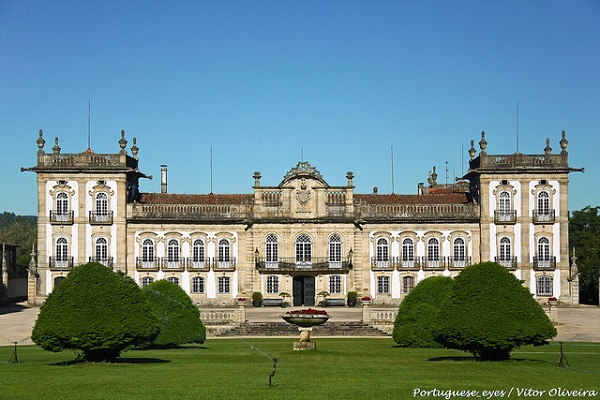
Trás-os-Montes
Not many tourists venture out to this remote corner of Portugal, let alone experience its wine. The high altitudes and the extreme climate is what sets Trás-os-Montes apart from other Portuguese wine regions. The most common wine from this region is Transmontano, a full-bodied red with high alcohol levels. They also produce Vinho dos Mortos (Wine of the Dead), a type of wine that was buried by locals during the French Invasion, so it wouldn’t get stolen. That’s how much we love our wine! Today there are still a few farmers who keep this tradition alive.
Best Trás-os-Montes Wineries: Quinta das Corriças and Quinta De Arcossó
Douro and Porto
Search for a Portuguese wine region, and you’ll probably come across the Douro Valley. It’s one of the oldest wine regions in the world! Its vineyards are scattered across steep hills providing breathtaking views over the Douro river. The region is most famous for the Vinho do Porto, aka, port wine, a sweet drink often served with dessert. Here at Devour, we love Pêras Bêbedas, delicious poached pears soaked in Vinho do Porto.
Best Douro and Porto Wineries: Quinta da Pacheca, Quinta da Romaneira, and Lavradores de Feitoria
Best Port Wine Cellars: Caves Ferreira, Real Companhia Velha, and Taylor’s.
Insider’s tip: One of the best ways to explore the Douro region is to take the historical steam train which runs between June and October.
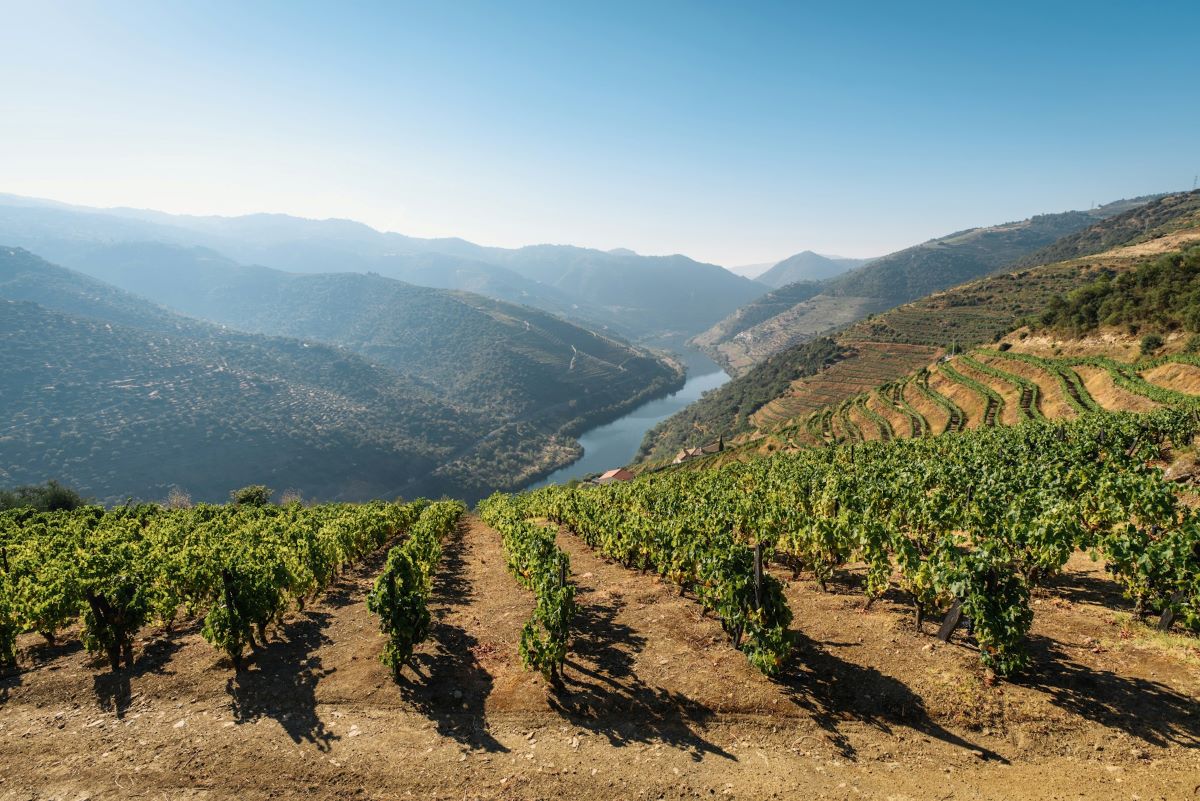
Távora-Varosa
Are you a champagne fan? If so, Távora-Varosa is the place for you! This region offers grapes with high acidity which are perfect for sparkling wine. It’s here you’ll find most plantings of Chardonnay and Pinot Noir in Portugal, two grapes from the Champagne region in France.
Best Távora-Varosa Wineries: Caves da Murganheira
Dão and Lafões
Tucked between high mountains, the region of Dão offers some of the best Portuguese red wines. Lafões, on the other hand, produces more acidic wines, similar to the Vinho Verde region. To learn more about the wines of Dão, we suggest visiting the Solar do Vinho do Dão in Viseu.
Best Dão and Lafões Wineries: Casa de Santar and Casa da Passarella
Bairrada
Bairrada is a small region of Portugal located near the Atlantic. It’s famous for its delicious suckling pig (leitão à Bairrada), and for its red wines. The white grapes from this region are mostly used to produce sparkling wine.
Best Bairrada Wineries: Quinta das Bágeiras and Quinta dos Abibes
Beira Interior
Beira Interior is home to Serra da Estrela, one of Portugal’s highest mountains. It’s where most locals go to see snow in the winter. When it comes to wine regions, Beira Interior is still the underdog, but we encourage you to try their wines, especially the red and the rosé.
Best Beira Interior Wineries: Quinta dos Termos, Quinta do Cardo and Adega Castelo Rodrigo
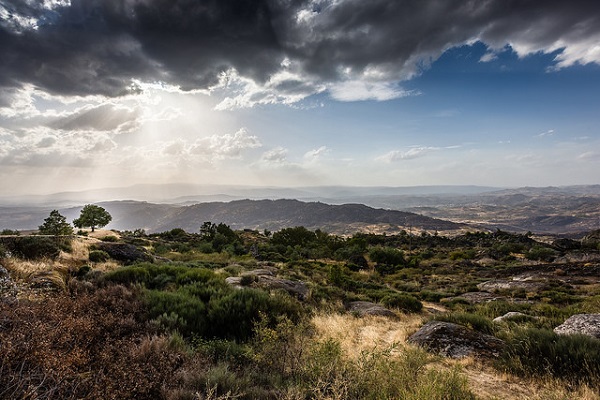
Tejo
If you order the house wine at a Lisbon restaurant, odds are you’ve tried Tejo wine. Previously known as Ribatejo, this region produces large quantities of wine which supply most restaurants in the capital. Wines from this region are among the most affordable in Portugal. The white wines tend to be very fruity with tropical aromas, and the reds have soft tannins.
Best Tejo Wineries: Quinta da Alorna and Quinta da Lagoalva
Lisbon Region
As a wine region, Lisbon offers a variety of wines, ranging from light whites to liqueur wines. Some of the best wines from this region come from Alenquer, Bucelas, Colares, and Carcavelos. You might have heard of Carcavelos for its beaches, but did you know this seaside town makes a delicious fortified wine? It doesn’t produce as much as it used to, but if you spot it on a menu we recommend giving it a go!
Best Lisbon Wineries: Adega Regional de Colares, Adega do Casal da Manteiga and Quinta das Carrafouchas.
Setúbal Peninsula
There are many reasons to visit Setúbal. The friendly dolphins, the Natural Park of Arrábida, and the stunning beaches of Sesimbra, but for wine lovers, it’s the Moscatel. Primarily made from Muscat grapes, Moscatel is sweet and fruity, making it the perfect drink to end a meal.
Best Setúbal Wineries: José Maria da Fonseca, Bacalhôa Vinhos de Portugal and Quinta de Alcube.
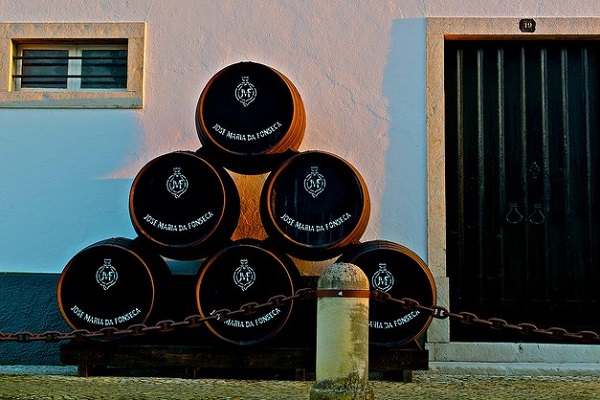
Alentejo
Cork trees, vines, and olive groves make up the landscape of Alentejo. Alentejo wines are up there with the Douro as one of the best Portuguese wines. The reds are full-bodied and fruity, while the whites tend to be mild and slightly acidic. Whichever you go for, it’s hard to go wrong with an Alentejo wine.
Best Alentejo Wineries: Herdade do Esporão, Herdade dos Grous, and Adega Mayor
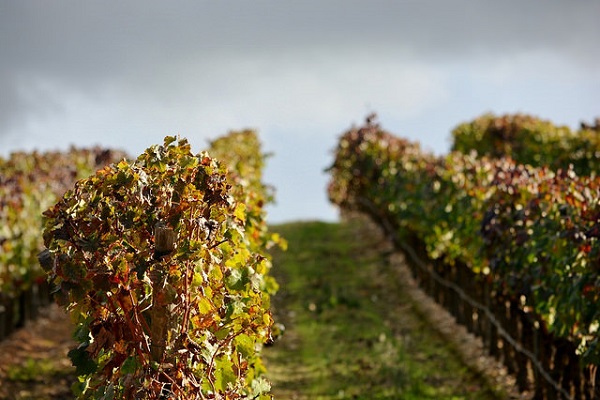
Algarve
If you’re like most tourists, your first visit to Portugal was probably to the Algarve. And we don’t blame you! The constant sunshine and the white sandy beaches attract thousands here every year, including locals. Winemaking took the back seat for a while, but recently there’s been an effort to revitalize it. Algarve wines are smooth and fruity, and with the weather being quite warm, the reds are usually better than the whites.
Best Algarve Wineries: Quinta dos Vales, Monte da Casteleja and Adega do Cantor.
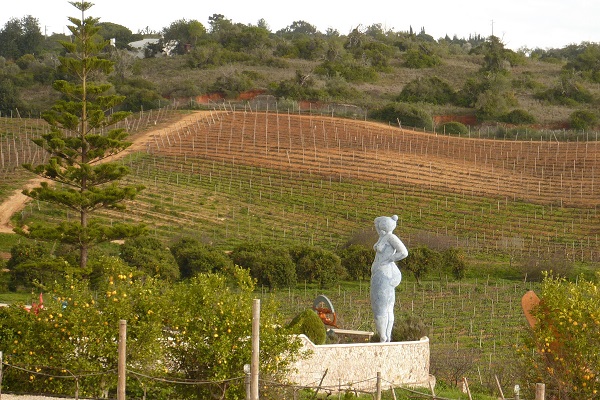
Madeira & Azores
You’ll find some of Portugal’s most incredible landscapes in these two archipelagos. We love the subtropical weather of Madeira and the crater lakes of Azores.
As for the wine, it’s hard to take sides, since they produce very different things. Madeira wine is considered one of the best fortified wines in the world, and it can last for centuries. Shakespeare even mentions it in his play, Henry IV!
The Azores has nine islands, but only three of them focus on wine production: Pico, Graciosa, and Terceira. The region is known for Vinho de Cheiro, a sweet fragrant wine with low alcohol levels, which is also used in traditional dishes from the Azores, like the Polvo Guisado (octopus stew).
Best Madeira Wineries: Blandy’s Wine Lodge and Vinhos Barbeito.
Best Azores Wineries: Quinta da Jardinete and Cooperativa Vitivinicola Da Ilha Do Pico
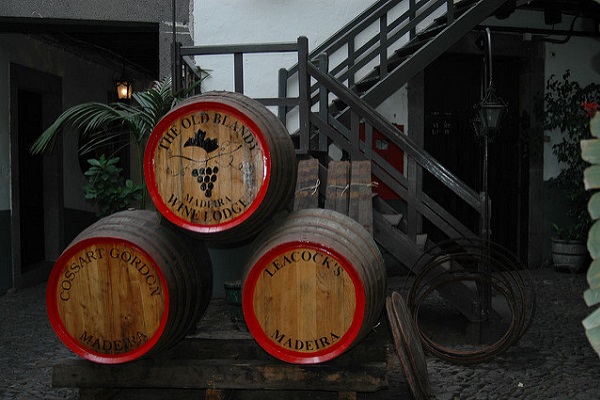
Now that you know a little more about Portuguese wine, you probably want to try some for yourself. (We can’t blame you—it’s pretty great.) Our solution: tag along on our Tastes & Traditions of Lisbon Tour, where we sample a handful of fabulous wines from across the country. One sip and you’ll get what all the fuss is about.









We know a lot about Australian wines but nothing about Portugal’s This is a fantastic guide. Just a question about your wineries though. Must we book to visit all wineries? Being unfamiliar with Alentajo region it will be difficult to know when to make bookings and which wineries we can visit. Can you suggest a website that may help?
Hi Kerrie—most wineries have websites with a booking section, and it’s always recommended to book in advance. For Alentejo, we recommend checking this website: https://www.vinhosdoalentejo.pt/en/wine-route/alentejo-wine-route/ which compiles all the wineries in the region. They have their headquarters in Évora so you can always go there and ask them to help with the bookings. Herdade do Esporão (https://www.esporao.com/) is one of the most famous wineries in Alentejo, but it’s worth checking the others on the list too. We hope this helps—enjoy Portuguese wine country!